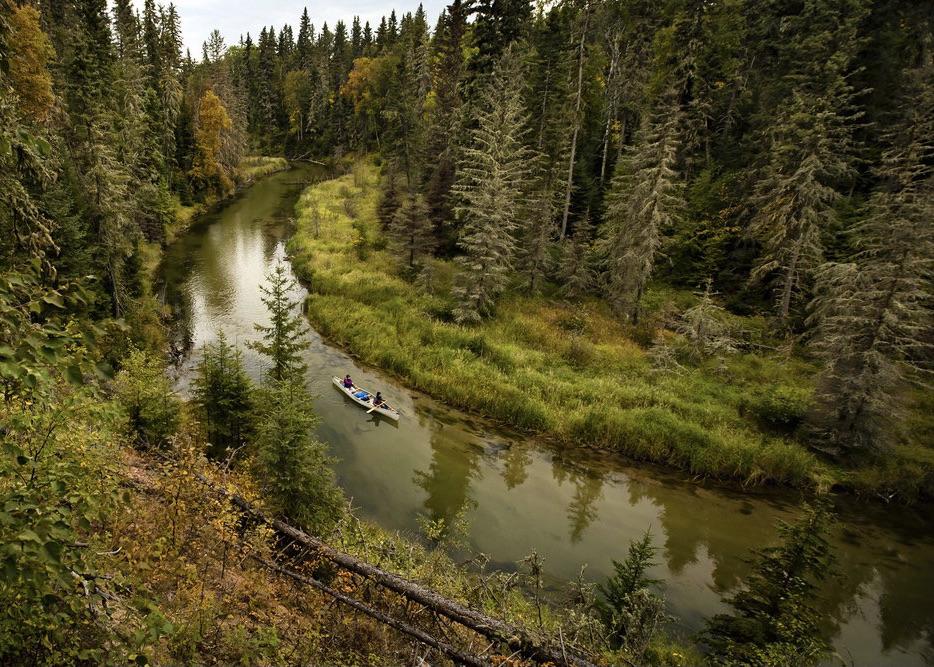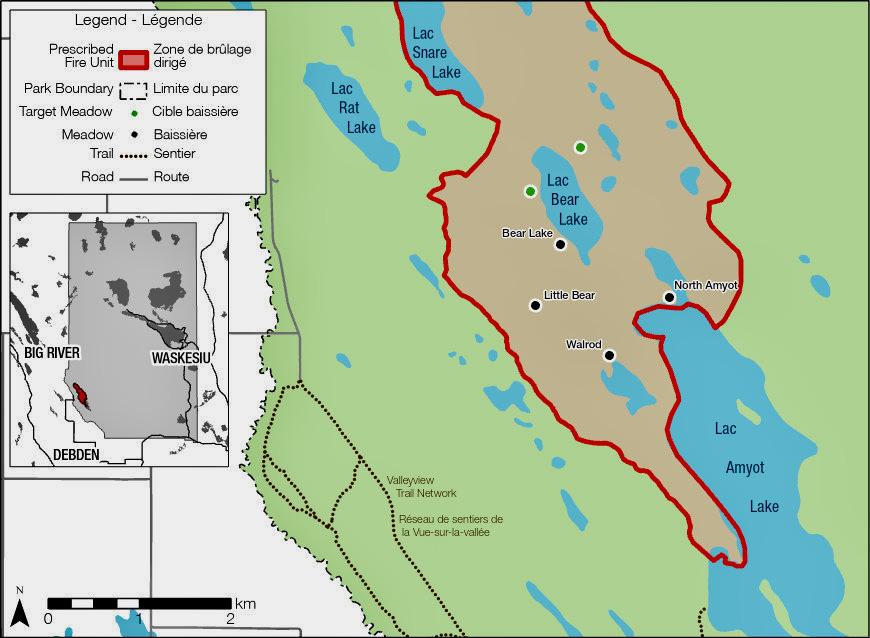
Canoeing through Prince Albert National Park/Tourism Saskatchewan, Greg Huszar Photography
Parks Canada is conducting a prescribed fire in the southwest corner of Prince Albert National Park in Saskatchewan.
The Paskwâw-Mostos prescribed fire plays a key role in multi-year restoration projects to rejuvenate forested areas, increase bison habitat and expand and restore grasslands.
“Prescribed fire is used to return the natural process of fire to the landscape to reduce the encroachment of aspen forests and rejuvenate meadows and native grasslands like fescue,” according to the park. “The increase in biodiversity creates habitat for insects, small plants, and animals like the Sturgeon River plains bison herd, which feed in these natural meadows.”
The safety of people, infrastructure and neighbouring lands is the top first priority. Up to 80 hectares (198 acres) of the prescribed fire unit may be burned, if the required spring weather and environment conditions are met.
“After the fire, the area will be monitored and suppression actions are taken as required until the fire is classified as extinguished,” Parks Canada said in a news release. “Neighbouring residents may experience some smoky conditions in the evening due to smoke travelling out of the prescribed fire unit along the Sturgeon River Valley.”

A map that shows the prescribed fire area of Prince Albert National Park/Parks Canada
Parks Canada promised additional safety measures to ensure the safety of fire management personnel and prevent transmission of Covid-19 during fire operations.
Prince Albert National Park is home to hiking and canoe routes, including the Grey Owl Trail through forest, lakes and wetlands to the historic lakeside cabin of legendary, turn-of-the-century conservationist Archibald Stansfeld Belaney aka Grey Owl. The resort town of Waskesiu Lake acts as a base so visitors can access the park's long, sandy beaches, swimming, boating, camping and other activities.
The park protects northern coniferous (boreal) forest and has the only fully protected white pelican nesting colony in Canada, rare fescue grasslands and free-ranging plains bison. it's about 230 kilometres (143 miles) northeast of Saskatoon.

 Support Essential Coverage of Essential Places
Support Essential Coverage of Essential Places



